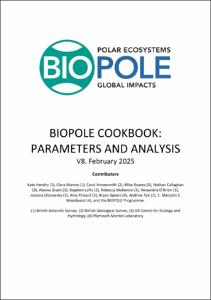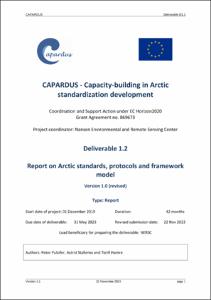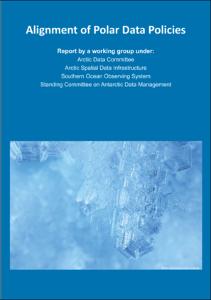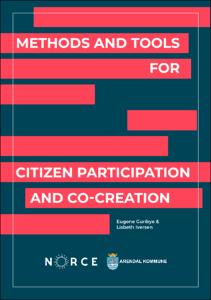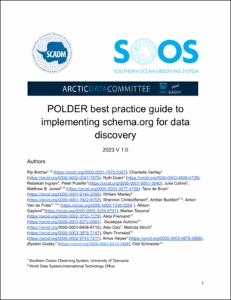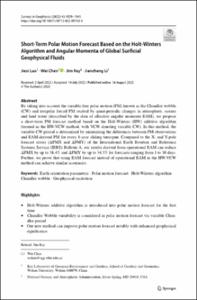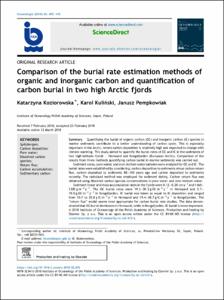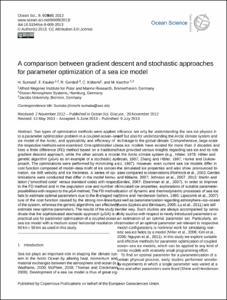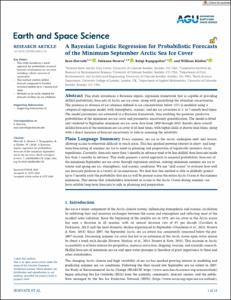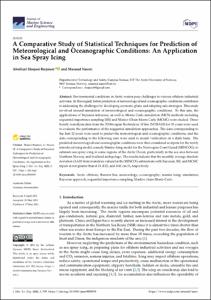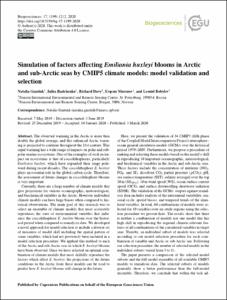⇒ POLAR Collaborations
Browse by
Recent Submissions
-
The Nansen Legacy Sampling Protocols, Version 10.
(Septentrio Academic Publishing, Tromso, Norway, 2022)The collection of detailed sampling protocols is crucial tool for the success of the Nansen Legacy, because they ensure: Methodological agreement between the involved researchers Continuity and comparable data ... -
BIOPOLE Cookbook: parameters and analysis, Version 8.
(BIOPOLE Programme, UKRI NERC, Swindon, UK, 2025)The aim of this document is to detail the key determinands, sampling preparation, methodology and analyses required for the NERC programme BIOPOLE, with the overall objective of maintaining consistency in different sampling ... -
CAPARDUS Deliverable 1.2 Report on Arctic standards, protocols and framework model, Version 1.0 (Revised).
(Nansen Environmental and Remote Sensing Center, Bergen, Norway, 2023)Standards can act as common language and practices among actors when aiming to share and use observing systems, data, ensure safety, and many other activities in the Arctic. Equipment manufacturers, observing programs, ... -
Inverse modelling of cloud-aerosol interactions - Part 2: Sensitivity tests on liquid phase clouds using a Markov chain Monte Carlo based simulation approach.
(2012)This paper presents a novel approach to investigate cloud-aerosol interactions by coupling a Markov chain Monte Carlo (MCMC) algorithm to an adiabatic cloud parcel model. Despite the number of numerical cloud-aerosol ... -
Alignment of Polar Data Policies: Recommended Principles.
(Norwegian Polar Institute, Tromso, Norway, 2021)This document presents a basis for alignment of polar data policies, notably the policies and statements of the Scientific Committee on Antarctic Research (SCAR), the International Arctic Science Committee (IASC), the ... -
Methods and tools for Citizen Participation and Co-Creation.
(Norwegian Research Centre AS (NORCE), Arendal, Norway, 2020)This document presents a selection of 40 tools or methodologies for citizen involvement in the form of meeting places, participation in planning processes, dialogue through digital tools, knowledge acquisition and new ... -
POLDER best practice guide to implementing schema.org for data discovery.
(Zenodo, 2022)This document aims to utilize schema.org for the Polar data management community. The community has agreed on and plans on implementing uniform best practices for documenting data, observing assets, and other entities. ... -
Relationship Between Carbon- and Oxygen-Based Primary Productivity in the Arctic Ocean, Svalbard Archipelago.
(2019)Phytoplankton contribute half of the primary production (PP) in the biosphere and are the major source of energy for the Arctic Ocean ecosystem. While PP measurements are therefore fundamental to our understanding of marine ... -
Learning Polar Encodings for Arbitrary-Oriented Ship Detection in SAR Images.
(2021)Common horizontal bounding box-based methods are not capable of accurately locating slender ship targets with arbitrary orientations in synthetic aperture radar (SAR) images. Therefore, in recent years, methods based on ... -
Accounting for Uncertainties in Biodiversity Estimations: A New Methodology and its Application to the Mesopelagic Sound Scattering Layer of the High Arctic.
(2022)Measures of biological diversity (biodiversity) are important for monitoring the state of ecosystems. Several indices and methods are used to describe biodiversity from field observations. Marine faunal biodiversity is ... -
Short-Term Polar Motion Forecast Based on the Holt-Winters Algorithm and Angular Momenta of Global Surficial Geophysical Fluids.
(2022)By taking into account the variable free polar motion (PM) known as the Chandler wobble (CW) and irregular forced PM excited by quasi-periodic changes in atmosphere, oceans and land water (described by the data of effective ... -
A simulator for the CLARA-A2 cloud climate data record and its application to assess EC-Earth polar cloudiness.
(2020)This paper describes a new satellite simulator for the CLARA-A2 climate data record (CDR). This simulator takes into account the variable skill in cloud detection in the CLARA-A2 CDR by using a different approach to other ... -
Comparison of the burial rate estimation methods of organic and inorganic carbon and quantification of carbon burial in two high Arctic fjords.
(2018)Quantifying the burial of organic carbon (OC) and inorganic carbon (IC) species in marine sediments contribute to a better understanding of carbon cycle. This is especially important in the Arctic, where carbon deposition ... -
High-latitude surface temperature estimates from thermal satellite data.
(1997)The surface temperature of the polar regions controls sea ice growth, snow melt, and surface-atmosphere energy exchange. However, our limited knowledge of polar surfaces and atmospheres has hampered the development of ... -
A comparison between gradient descent and stochastic approaches for parameter optimization of a sea ice model.
(2013)Two types of optimization methods were applied to a parameter optimization problem in a coupled ocean-sea ice model of the Arctic, and applicability and efficiency of the respective methods were examined. One optimization ... -
Less Surface Sea Ice Melt in the CESM2 Improves Arctic Sea Ice Simulation With Minimal Non-Polar Climate Impacts.
(2022)This study isolates the influence of sea ice mean state on pre-industrial climate and transient 1850-2100 climate change within a fully coupled global model: The Community Earth System Model version 2 (CESM2). The CESM2 ... -
Lead Detection in Polar Oceans: A Comparison of Different Classification Methods for Cryosat-2 SAR Data.
(2018)In polar regions, sea-ice hinders the precise observation of Sea Surface Heights (SSH) by satellite altimetry. In order to derive reliable heights for the openings within the ice, two steps have to be fulfilled: (1) the ... -
A Bayesian Logistic Regression for Probabilistic Forecasts of the Minimum September Arctic Sea Ice Cover.
(2020)This study introduces a Bayesian logistic regression framework that is capable of providing skillful probabilistic forecasts of Arctic sea ice cover, along with quantifying the attendant uncertainties. The presence or ... -
A Comparative Study of Statistical Techniques for Prediction of Meteorological and Oceanographic Conditions: An Application in Sea Spray Icing
(2021)Environmental conditions in Arctic waters pose challenges to various offshore industrial activities. In this regard, better prediction of meteorological and oceanographic conditions contributes to addressing the challenges ... -
Simulation of factors affecting Emiliania huxleyi blooms in Arctic and sub-Arctic seas by CMIP5 climate models: model validation and selection.
(2020)The observed warming in the Arctic is more than double the global average, and this enhanced Arctic warming is projected to continue throughout the 21st century. This rapid warming has a wide range of impacts on polar and ...
 Repository of community practices in Ocean Research, Applications and Data/Information Management
Repository of community practices in Ocean Research, Applications and Data/Information Management

